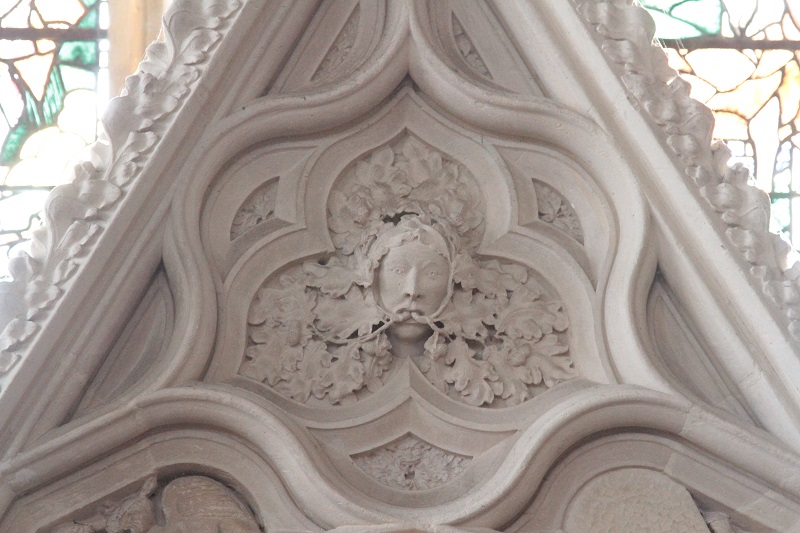Last Thursday, March 10, Imogen Corrigan gave a talk at East Street Museum entitled “The Green Man in English Churches”. What, I hear you say, I thought the green man was a pagan fertility figure usually seen around Hastings in early May.
No, this talk concerned ‘foliate heads’ in churches where you find carved heads covered in leaves or with greenery growing out of the mouth, ears, eyes or nostrils. Some are more like heads appearing through a mass of leaves. The term “Green Man” in this context first appeared in 1939 and has stuck.
Imogen has been doing research into The Development and Function of the Foliate Head in English Medieval Churches. This has led her to visit numerous churches in England and across Europe, camera in hand.
We were shown pictures of green men on many church objects, door lintels, columns, misericords and very occasionally in stained glass windows. They are nearly always men, with very few examples of women or animals, and they have been around for some time, with one of the earliest examples around 400 AD.
The greatest number of them appear to be from the 1400s. Why did so many appear then? Well, I cannot really say, as it would give away a good lecture. Look up your history books to see what was happening then. The disgorging of foliage may have something to do with resurrection.
The lecture was well received by an appreciative audience and Imogen took questions at the end.
The closest example of a green man is at the church in Winchelsea. It is above one of the tombs on the right hand side as you enter the church. It is shown in the picture above.
If you want to find out more, visit Imogen’s website.
And, if your thirst for medieval history is not sated, you may like to attend the 6th Rye Medieval Biennial Conference at the Milligan Theatre, Rye College on Saturday October 22. The theme for the conference is Conspicuous Consumption and Display in Late Medieval England.
Photo: Ray Prewer



